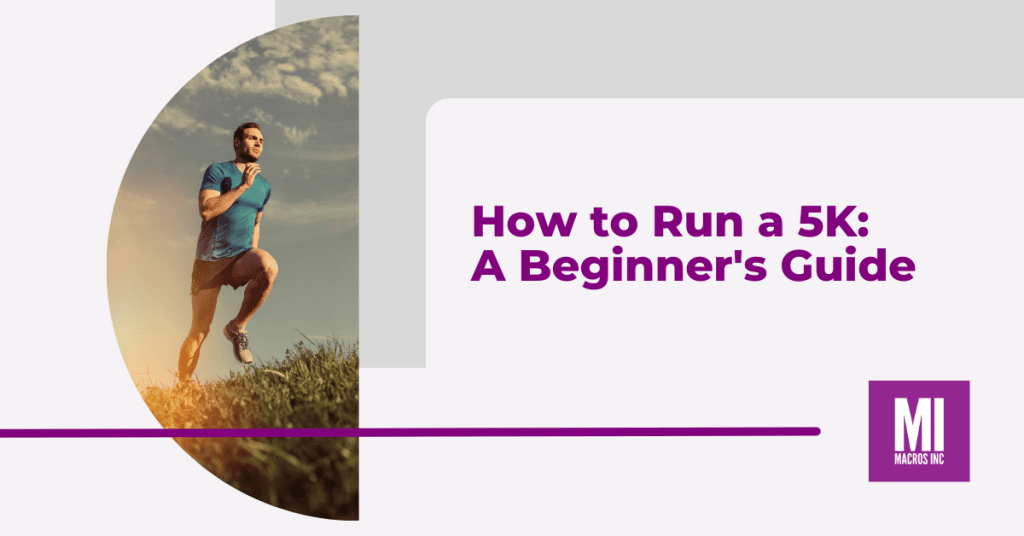Are you ready to lace up your running shoes and conquer your first 5K? Whether you’re a complete beginner or someone looking to improve your running skills, this comprehensive guide will provide you with the knowledge and confidence to run 5 kilometers like a pro.
In this article, we’ll explore the key aspects of running a 5K, share valuable tips, and address some common questions to help you on your journey. So, let’s dive in!
Jump to a Topic
How to Run a 5k as a Beginner
When it comes to running a 5K, beginners may face a few challenges. Fitness level, previous running experience, and expectations can play a role in shaping your journey. However, don’t let these challenges discourage you. With the right mindset and approach, you can overcome them and achieve your goal of running a 5K. Here’s a few common challenges you may experience;
Fitness Level
As a beginner, one of the common challenges you may face is your current fitness level. Running requires cardiovascular endurance and muscular strength, which may take time to develop if you are starting from scratch. However, don’t be discouraged! Remember that everyone starts somewhere, and with consistent effort, you can improve your fitness level gradually.
To overcome this challenge, start by incorporating a mix of walking and jogging intervals into your training routine. Begin with shorter distances and gradually increase the running intervals as your fitness improves.
Celebrate small achievements along the way, such as running for an extra minute or covering more distance than before. With persistence, your endurance will increase, and you’ll find yourself running for longer periods without feeling exhausted.

Previous Running Experience
Another challenge beginners often face is a lack of running experience. If you haven’t engaged in regular running activities before, your body and mind may need time to adapt to the demands of running.
To tackle this challenge, focus on building a solid foundation. Start by establishing a consistent running routine, aiming for three to four sessions per week. Begin with shorter distances and slower paces, gradually increasing both as your body adapts. This gradual approach allows your muscles, joints, and cardiovascular system to adjust to the impact and demands of running, minimizing the risk of injury.
Expectations
Setting realistic expectations is crucial for beginner runners. It’s essential to remember that progress takes time, and you won’t become a seasoned runner overnight. Unrealistic expectations can lead to frustration and demotivation.
To overcome this challenge, embrace a growth mindset and celebrate every milestone, no matter how small. Focus on your individual progress rather than comparing yourself to others. Recognize the improvements in your endurance, pace, and overall well-being. Remember that consistency and dedication will lead to long-term success.
Seeking Support and Accountability
Starting a new endeavor can be daunting, and having the support and accountability of others can make a significant difference. It’s common to face self-doubt or lack motivation along the way.
To address this challenge, consider joining a running group or finding a running buddy who shares similar goals. Surrounding yourself with like-minded individuals can provide encouragement, motivation, and a sense of camaraderie. Additionally, sharing your running journey on social media or joining online communities can offer support, advice, and inspiration from fellow runners.
By acknowledging and addressing these challenges, you can overcome them and build a strong foundation for your running journey. Remember, progress is personal, and with determination, you’ll be amazed at what you can achieve as a beginner runner. Embrace the process, have fun, and enjoy the transformation that running brings to your life.
How to Run a 5K
Follow a Structured Running Plan
If you’re new to running or want a structured approach, following a plan such as the popular Couch to 5K (C25K) or our very own Zero to Thirty is a great way to ease into your running journey and guarantee success. These plans are designed to gradually increase your running endurance and prepare you for a 5K without pushing you too hard. If you’re not sure what plan is right for you, try our Running Plan Quiz to get a tailored program specific to your goals and experience!

Benefits of Following a Running Plan
Reduced Risk of Injury
One of the key benefits of following a structured training plan like Couch to 5K or Zero to Thirty is the reduced risk of injury. The plan is designed to gradually increase your running duration and intensity, allowing your body to adapt and build strength over time. This gradual progression helps to minimize the risk of common running injuries, such as shin splints, stress fractures, or muscle strains. All our running plans focus on pillars of training, rest days and gradual progress.
For a 5K running tailored to your level, download our beginner, intermediate or advanced running plans.
Increased Performance
A structured training plan provides a roadmap for your running journey, ensuring that you progressively challenge yourself and improve your performance. A plan like C25K or Zero to Thirty introduces intervals of walking and running, gradually increasing the running duration and reducing the walking intervals as you progress. This systematic approach helps to improve your cardiovascular fitness, endurance, and running efficiency, enabling you to run longer distances with greater ease.
Gradual Pace Increase
One of the advantages of following a structured plan is the gradual increase in pace. As a beginner, it’s important to avoid starting too fast and risking burnout or injury. A good running plan will guide you to start at a comfortable pace, gradually increasing your running speed as your fitness improves. This gradual pace increase allows your body to adapt to the demands of running, preventing overexertion and promoting sustainable progress.
Clear Guidance
A structured training plan provides clear guidance and eliminates the guesswork from your running routine. This plan lays out a detailed schedule, specifying the duration and intensity of each workout. This guidance helps you stay motivated and accountable, knowing exactly what to do and when to do it. You can focus on the task at hand, confidently following the plan, and seeing tangible progress week by week.
By embracing a structured training plan, you can experience these benefits and set yourself up for success in your 5K journey. It’s a proven approach that combines gradual progression, injury prevention, and performance enhancement. So, lace up your running shoes, follow the plan, and enjoy the rewards of a structured training program as you work towards completing your first 5K!
8 Tips for Running a 5K without Stopping:
Running a 5K without stopping might seem daunting at first, but with proper training and pacing, it’s absolutely achievable. Here are a few tips to help you maintain a steady pace and conquer the distance:
1. Develop a Consistent Training Routine
Consistency is key when it comes to running a 5K without stopping. Establish a training schedule that works for you and stick to it. Aim for three to four runs per week to build your endurance gradually. Consistency allows your body to adapt and improve over time, making it easier to tackle the 5K distance without stopping.
2. Pace Yourself
One of the most important aspects of running a 5K without stopping is pacing yourself properly. Start your run at a comfortable pace that allows you to maintain a conversation. Avoid starting too fast, as this can lead to early fatigue and the need to stop. As you progress through the run, listen to your body and find a sustainable pace that you can maintain until the finish line.
3. Implement Interval Training
Interval training is a valuable technique to increase your endurance and stamina. Incorporate intervals of running and walking into your training sessions. Begin with shorter intervals of running followed by brief walking breaks, gradually increasing the running duration and reducing the walking intervals over time. This approach helps build your cardiovascular fitness, allowing you to run longer distances without stopping.
4. Focus on Breathing Techniques
Proper breathing techniques can contribute to running a 5K without stopping. Practice deep belly breathing, inhaling deeply through your nose and exhaling fully through your mouth. This technique provides your muscles with the oxygen they need, reduces fatigue, and helps you maintain a steady rhythm throughout the run.
5. Mental Preparation
Running a 5K without stopping requires mental strength and focus. Prepare yourself mentally before each run by visualizing yourself running strong and crossing the finish line without breaks. Break down the distance into smaller milestones, focusing on one kilometer at a time or landmarks along your route. Positive self-talk and motivational mantras can also help you stay mentally strong during challenging moments.
6. Gradually Increase Distance
During your training, gradually increase the distance of your runs. Start with shorter distances and gradually add mileage as your fitness improves. This progressive approach allows your body to adapt to the demands of running, reducing the likelihood of fatigue and the need to stop.
7. Incorporate Strength Training
Strength training is a valuable complement to your running routine. Engaging in exercises that target your leg muscles, core, and upper body can enhance your running performance and prevent muscle imbalances or injuries. Incorporate strength training exercises at least twice a week to build overall strength and stability.
8. Stay Hydrated and Fuel Properly
Proper hydration and nutrition are essential for sustained energy and performance during a 5K run. Stay hydrated throughout the day, and if needed, consume water or a sports drink during your run. Additionally, fuel your body with a balanced diet that includes carbohydrates for energy, lean proteins for muscle repair, and healthy fats for overall well-being.
In Summary
By following these tips, you’ll be well-prepared to tackle a 5K without stopping. Remember to listen to your body, enjoy the process, and celebrate each milestone along the way. With dedication, consistency, and a positive mindset, you’ll achieve your goal of running a 5K without needing to take a break.
Try our nutrition coaching, for free!
Be the next success story. Over 30,000 have trusted Macros Inc to transform their health.
Simply fill out the form below to start your 14-day risk-free journey. Let's achieve your goals together!




